Following the freezing rain, we had a large quantity of snow. The roads were pretty bad. I shoveled a path to my door as well as the steps, etc, and in some spots it was over a foot thick. This isn't all that unusual for this area or time of year, but it all came down very quickly.


Here's part of the graveyard near my house.

In house-related news, I took the afternoon (we had a half day at work) to FINALLY call about the duct work clearances, and I also decided to work on the other cold air return in the MB.
As it turns out, the clearances are much smaller than I had thought, which is awesome. I can go as close as 1/4" with my drywall columns, but I'll err on the side of caution and leave about 3/4" which is SIGNIFICANTLY less than the former 2-3".
I decided to take some step-by-step photos of my custom tinsmithing job. This kind of custom duct "box" is really not that hard to make, and I used very few tools.
You need:
- sheet metal (I used SCRAPS left over from previous bad duct connections, and leftovers that were in the basement).
- Shears (I used a pair of tin snips that I have on hand. Basically they are heavy duty scissors, and are used the same way.
- Aluminum tape
- A marker (Sharpie)
- Optional but useful: pop-rivets and tool
Here's what I'm creating. It's a box that measures about 12" x 8" x 8" with a side take-off:
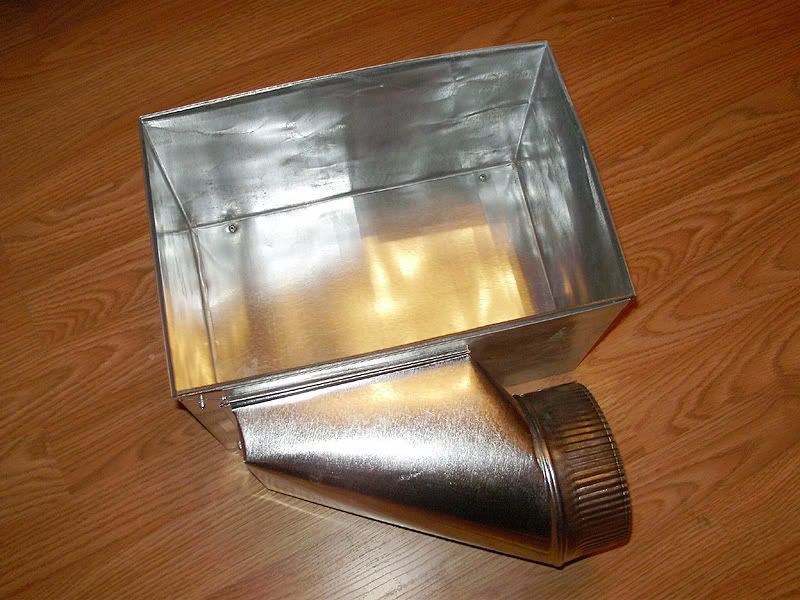
To crate the box, you have a few options. If possible, make all 4 sides in one continuous piece. I was using scraps, so I created the box in 3 pieces rather than just 2. If you are making all the sides in one piece, start by marking out your sections for each part (12x8 - 8x8 - 12x8 - 8x8) Add a 1" tab on one side section (left or right, it doesn't really matter), and a 1" tab along each bottom edge.
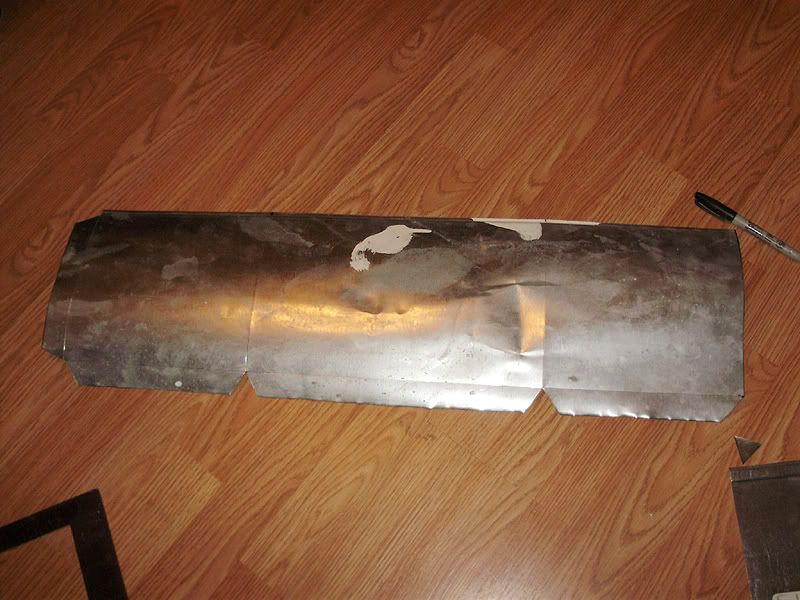
Note that I used just a regular piece of 5" round pipe to make this box. I just unclipped it, flattened it out, and I kept the nice folded edge to the top for extra strength.
Next, score along each line. You can use just about anything to do this, but press firmly and use a straight-edge.
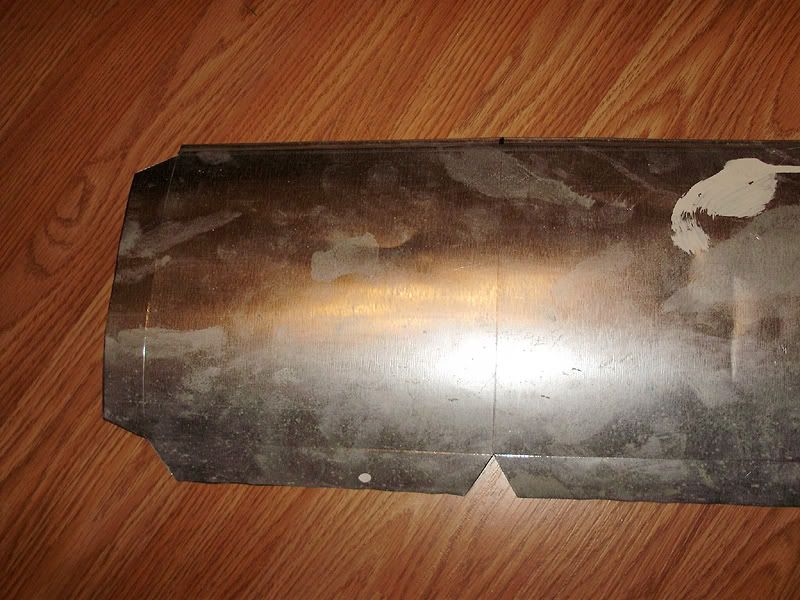
Note 2: I removed the paint smears before making my folds.
If you have a thick edge (as I did at the top), press, or crease these along your fold lines. Fold all your corners using a straight-edge along the line. I just used the large metal square that I was using to mark everything.
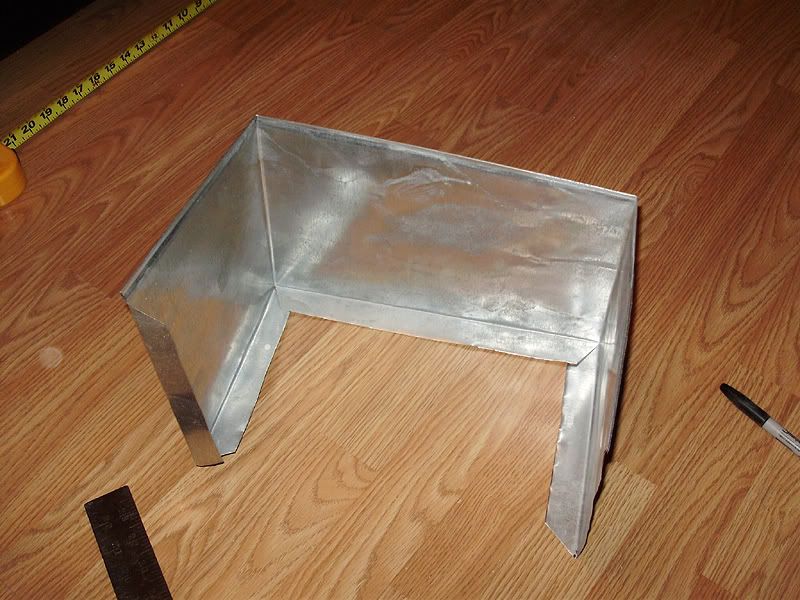
Since I had to make an extra side, I did that one in the same way. This 4th side was going to have the take-off in it, so I marked the location where I wanted it (close to the bottom, and far enough from the edge to avoid the 1" corner tab. I also doubled the bottom flap to make an extra strong seam since it will be thin along that edge (because of the hole).
I cut straight through the small edge to cut out the rectangle. This corner will be reinforced later with tape and rivets.
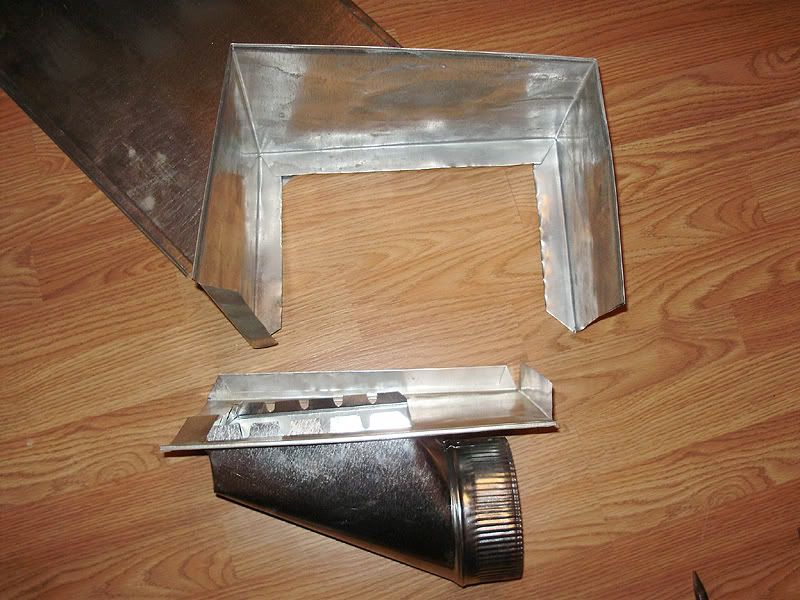
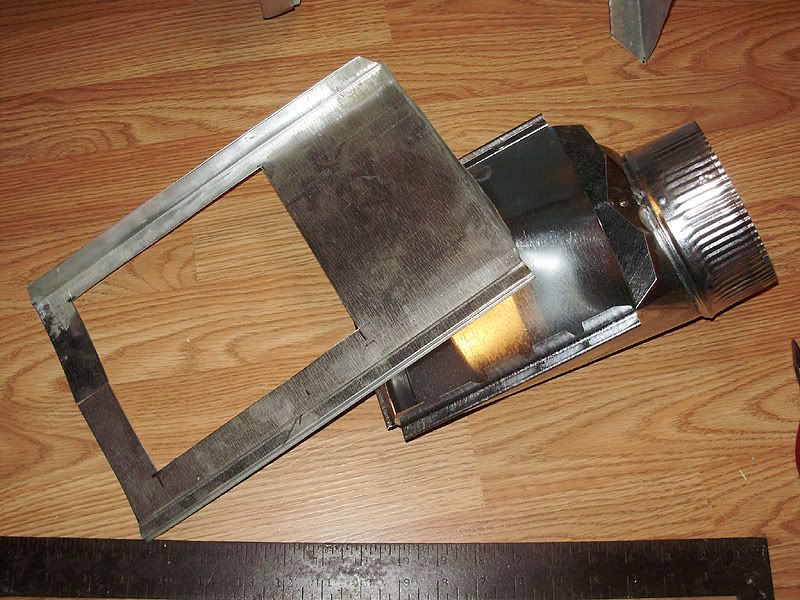
Once everything is cut, folded, and ready, all you need to do is assemble it. I used aluminum tape to hold it together around the outside, and I added some pop-rivets in the corner joints, and to hold the bottom (which was just a rectangular sheet).
And voila!

Time spent: probably 1-2 hours?
Cost: 0$ (scrap metal, and a tiny bit of aluminum tape, 8 rivets - all things I already had on hand)
Note 3: Do not attach the side take-off. The box needs to be set into the floor first, which will be impossible to do with the take-off attached.

That cemetary picture looks so serene. I could get lost in there just wandering for hours. Well, maybe not hours. As soon as my toes got cold I'd be looking for a hot fire and a warm drink.
ReplyDelete